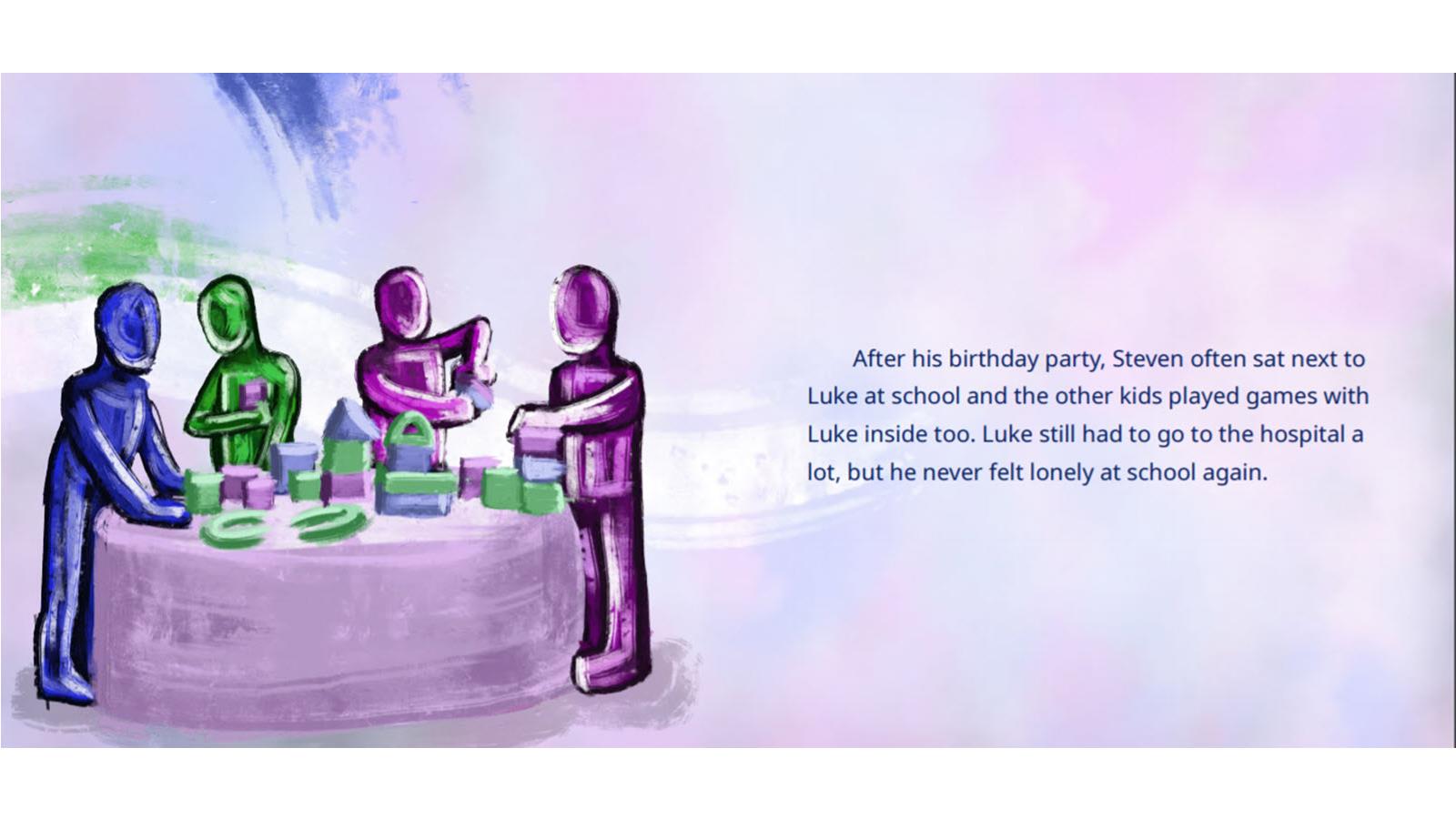To explain rare disease to young children, Serbian author Danijela Knez wrote “A Friendship Story,” a free, downloadable story available in 28 languages.
The book and support materials, including a lesson plan for children as young as 5 or 6, can be found on the Rare Disease Day website.
The story follows a child named Luke who has an unnamed rare disease that limits his ability to run like other kids and he spends a lot of time at doctor visits. Luke’s limitations make him sad but he soon gains a friend, Steven, who has been temporarily sidelined because of a broken leg. By the end of the story, Steven helps the rest of the class begin to understand Luke’s health problems and they accept him as a playmate. The story ends with everyone attending Luke’s birthday party.
An excerpt: “Before they had arrived, Steven had explained to the other children ‘Luke likes playing games, but he gets very tired because his body works differently from ours. So it’s better if we play indoor games.’ When the other kids understood, they were happy to join in too to celebrate Luke.”
Knez, who has a rare disease herself, deliberately left Luke’s disease and symptoms vague so many children would see themselves in his story. In addition to English, the book is available for download in languages including Arabic, Bulgarian, Hindi, Japanese, Mandarin, Portuguese, Spanish, Russian and Ukrainian.
“We hope this lesson and the book can be used as a talking point to explain the health issues some children might be facing. Each of us can contribute by connecting with others and helping break the isolation some people might feel,” the authors said in a lesson plan for 5-6-year-olds.
The lesson invites teachers to extend the lesson with a coloring page and a name badge that says “I Support Rare Disease Day,” which is February 28. It says teachers should be ready for questions kids of this age are likely to ask such as, “Can I catch this rare disease?” and “Can we help them to get better?”
Learn about another book for children who have rare diseases: "Extraordinary!" by Evren and Kaya Ayik.



